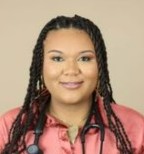Authors: Meghan Etsey, Lakshmi Meenakshi Immaneni, Brianna Clark, DO – On behalf of AMWA Gender Equity Task Force
Did you know that your zip code may be a stronger predictor of life expectancy than your blood pressure, cholesterol levels, or even genetics? Where a woman lives—whether in a rural farming community or an urban neighborhood—has a profound impact on her ability to access healthcare and maintain her well-being. Geographic location affects everything from the availability of services to the quality of care women receive. When we consider gender alongside geography, the disparities in health outcomes become even more stark.
Rural and urban areas often have vastly different healthcare infrastructures. Urban centers typically house large hospitals and specialists, while rural communities may have only a small clinic hours away. According to the National Rural Health Association, rural Americans may live an average of 10.5 miles from the nearest hospital, versus just 4.4 miles for their urban counterparts (Kilgore, 2022). These geographic disparities lead to significant differences in outcomes: rural women experience higher rates of chronic illness, reduced access to reproductive services, and increased maternal mortality (Weeks et al., 2023). The shortage of clinicians and long travel distances create barriers that urban residents may take for granted as easily overcome.
Women in rural communities frequently face unique, compounding barriers to care. A persistent shortage of healthcare clinicians in these areas significantly restricts access to essential services such as cancer screenings (e.g., mammograms), long-term management of chronic conditions, and mental health support. The scarcity of OB/GYNs and prenatal care services can delay critical interventions during pregnancy, contributing to poor maternal outcomes. This critical shortage is particularly acute in rural and underserved communities, where access to essential prenatal care is often limited. Mental health care is often unavailable or underutilized due to limited clinicians, social stigma, and privacy concerns. Importantly, many of these health issues could be prevented or mitigated with access to quality primary care—ideally initiated before pregnancy. Comprehensive primary care provides an essential foundation for managing chronic conditions, delivering preventive services, and promoting early intervention. It also serves as a crucial setting for addressing sex-specific health needs and educating patients about gender differences in medical presentation—for example, how symptoms of a heart attack may manifest differently in women compared to men, potentially leading to misdiagnosis or delayed treatment. The Centers for Disease Control and Prevention (CDC) reports that women in rural regions are 60% more likely to die from pregnancy-related complications than those in urban areas, often due to delayed or inadequate care (FCC, 2017).
Additionally, financial barriers play a significant role in limiting access to care—many families cannot afford to take time off work or secure affordable childcare, making it difficult to attend routine appointments and often delaying preventive care, which increases the risk of poor health outcomes. Women living in rural areas often face significant barriers to accessing abortion and complex reproductive healthcare, including the need to travel long distances—a challenge compounded by limited transportation options, inability to take time off work, and lack of child care (Barr-Walker et al., 2019; (Rural Health Information Hub, 2022). These realities deepen health inequities and threaten long-term well-being.
While urban areas generally offer more healthcare options, systemic barriers still prevent many women from receiving high-quality care. Long wait times, overburdened safety-net hospitals, and economic obstacles like co-pays or lack of insurance coverage disproportionately affect low-income women and women of color. Moreover, urban healthcare systems are not exempt from implicit bias and structural racism. These factors contribute to mistrust and poorer health outcomes for marginalized groups, particularly Black and Indigenous women (Vela et al., 2022). Access alone is not enough—equity requires intentional, culturally competent care that recognizes and addresses these systemic issues.
Solving these disparities requires tailored approaches that consider both geography and gender. Here are ways we can close the health gap for women:
- Expanding telehealth services to improve access in rural areas, which includes improving digital literacy, broadband gaps and insurance coverage.
- Incentivizing clinicians to serve in underserved communities—by advocating for and securing sustained funding for loan forgiveness and repayment programs—can be a powerful tool to address workforce shortages and improve access to care. In parallel, developing pipeline programs for rural Americans interested in medical careers can help build a more representative and committed healthcare workforce over the long term.
- Supporting mobile health units and community-based care models to reach women where they are can help reduce barriers such as transportation and ensure women have access to essential preventative services like mammogram screenings that are critical for early detection and improved health outcomes. Expanding public health funding plays a key role in enabling these models, raising the question: does current funding adequately support broader access, or is increased investment needed to fully reach underserved populations?
- Promote culturally competent and gender-sensitive care—supported by training for clinicians on implicit bias, trauma-informed approaches, and inclusive communication—to improve trust and outcomes in all communities.
Women’s health outcomes should not be dictated by their zip code. Whether in a remote farming town or a crowded city block, all women deserve access to timely, compassionate, and comprehensive care. Addressing the geographic divide in healthcare is not only a matter of access—it’s a matter of justice. By pushing for policy changes, funding local initiatives, and listening to the lived experiences of women across regions, we can begin to build a healthcare system rooted in equity. A commitment to structural reform is key to achieving lasting equity.
References
Kilgore, W. (2022, February 10). Facts & Figures: Access to Health Care in Rural America – Well Beings. Well Beings. https://wellbeings.org/facts-figures-access-to-health-care-in-rural-america
Weeks, William B., et al. “Rural-Urban Disparities in Health Outcomes, Clinical Care, Health Behaviors, and Social Determinants of Health and an Action-Oriented, Dynamic Tool for Visualizing Them.” PLOS Global Public Health, vol. 3, no. 10, 3 Oct. 2023, www.ncbi.nlm.nih.gov/pmc/articles/PMC10547156/pdf/pgph.0002420.pdf, https://doi.org/10.1371/journal.pgph.0002420.
Federal Communications Commission . “Focus on Maternal Health – Connect2Health FCC.” Fcc.gov, 2017, www.fcc.gov/reports-research/maps/connect2health/focus-on-maternal-health.html.
Barr-Walker, Jill, et al. “Experiences of Women Who Travel for Abortion: A Mixed Methods Systematic Review.” PLOS ONE, vol. 14, no. 4, 9 Apr. 2019, p. e0209991, https://doi.org/10.1371/journal.pone.0209991.
Rural Health Information Hub. “Rural Health Disparities Introduction – Rural Health Information Hub.” Ruralhealthinfo.org, 28 Nov. 2022, www.ruralhealthinfo.org/topics/rural-health-disparities.
Vela, Monica B., et al. “Eliminating Explicit and Implicit Biases in Health Care: Evidence and Research Needs.” Annual Review of Public Health, vol. 43, no. 1, 12 Jan. 2022, pp. 477–501, pmc.ncbi.nlm.nih.gov/articles/PMC9172268/, https://doi.org/10.1146/annurev-publhealth-052620-103528.
About the Authors
 Meenu Immaneni is a fourth-year medical student at the Burrell College of Osteopathic Medicine. She has a Bachelor of Science in Public Health with a focus in Nutrition from the University of North Carolina at Chapel Hill. Passionate about patient advocacy and advancing equity in healthcare, Meenu is a dedicated member of the American Medical Women’s Association, where she serves on the Gender Equity Task Force. She is particularly interested in promoting mentorship, and championing women’s leadership in medicine. When she is not studying, Meenu enjoys spending time with her husband and their cat, playing board games, reading, and traveling to explore new places.
Meenu Immaneni is a fourth-year medical student at the Burrell College of Osteopathic Medicine. She has a Bachelor of Science in Public Health with a focus in Nutrition from the University of North Carolina at Chapel Hill. Passionate about patient advocacy and advancing equity in healthcare, Meenu is a dedicated member of the American Medical Women’s Association, where she serves on the Gender Equity Task Force. She is particularly interested in promoting mentorship, and championing women’s leadership in medicine. When she is not studying, Meenu enjoys spending time with her husband and their cat, playing board games, reading, and traveling to explore new places.
 Meghan Etsey is a fourth year medical student from St. George’s University. She has a Bachelors of Arts in Biology and a Bachelors of Arts in Nutrition and Dietetics from Bluffton University in Bluffton, Ohio. She served as the President of the St. George’s University’s Women in Medicine chapter in St. George, Grenada where she expanded relationships with the community and worked towards educating women and helping the youth. She is also a member of the Gender Equity Task Force and Sex and Gender Health Collaborative Committees within the American Medical Women’s Association. When she is not pursuing medicine, you can find her with her friends and family on different road trips and adventures exploring the world.
Meghan Etsey is a fourth year medical student from St. George’s University. She has a Bachelors of Arts in Biology and a Bachelors of Arts in Nutrition and Dietetics from Bluffton University in Bluffton, Ohio. She served as the President of the St. George’s University’s Women in Medicine chapter in St. George, Grenada where she expanded relationships with the community and worked towards educating women and helping the youth. She is also a member of the Gender Equity Task Force and Sex and Gender Health Collaborative Committees within the American Medical Women’s Association. When she is not pursuing medicine, you can find her with her friends and family on different road trips and adventures exploring the world.
 Dr. Brianna Clark is a proud osteopathic physician. She has completed fellowships in Breastfeeding Medicine at the University of Rochester Lessons in Lactation Advanced Curriculum ( LILAC) and Climate Health Equity Fellowship ( CHEF) through the National Medical Association ( NMA). She spends her spare time thinking about innovative ways to provide equitable health care to all and create sustainable advocacy.
Dr. Brianna Clark is a proud osteopathic physician. She has completed fellowships in Breastfeeding Medicine at the University of Rochester Lessons in Lactation Advanced Curriculum ( LILAC) and Climate Health Equity Fellowship ( CHEF) through the National Medical Association ( NMA). She spends her spare time thinking about innovative ways to provide equitable health care to all and create sustainable advocacy.
